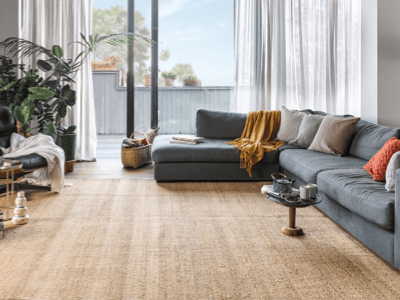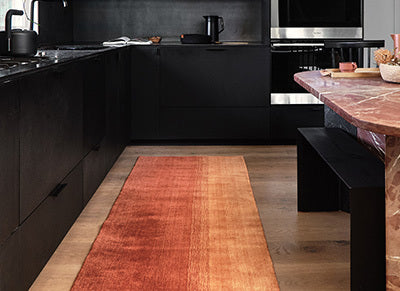














Order A Sample
Filesi - Rug Sample
Size 12" x 12"
Free shipping
One-of-a-kind Turkish Rugs
Our Turkish rugs are each one-of-a-kind. Many are made between 30 and 100 years ago, and curated by us. Others are fresh off the loom using traditional techniques. Known for their intricate patterns and tight, sturdy weaves, what began as a homemade, everyday comfort ultimately became a robust industry, embodying a profound artistic expression of Turkey's culture.
Recently Viewed
Filesi Vintage Turkish Runner Rug
Save 20% when you buy 2 or more non-custom rugs!
Overview
+
Free Shipping & Easy Returns
Sustainable
Natural Fiber
Upcycled
Handmade
Vintage
Ready to Ship
Only One Made
One-of-a-kind vintage rug, hand-knotted in Malatya, Turkey
Natural inconsistencies are inherent in these unique, handcrafted rugs, as are occasional imperfections. We ensure that the rug meets all standards for quality and this does not detract from its overall aesthetic.
- Only one in stock
- 100% wool pile on cotton foundation
- Dimensions: 2'8" x 9'5" (82 cm x 288 cm)
- Low pile: approximately 0.2" (0.5 cm)
- Color palette: dark dusty rose pink, slate gray, sage gray
- One end of the rug is slightly smaller than the other side of the rug.
- This rug displays slight rippling at the borders due to its handwoven nature.
Care
+
- Dust and dirt that accumulate in your rug can erode the fibers over time. The best way to combat this is to take your rug outside and give it a good shake once a week. Depending on how large it is, you may need to recruit a friend to help. Also, be sure to get a rug pad—this helps to preserve your rug in spite of dirt.
- If shaking it out isn’t possible, you can vacuum it instead—just be cautious, and don’t use a rotary vacuum, because it can damage the fibers. Once or twice a month, vacuum on low power with a non-rotary (no spinning brush) vacuum or suction attachment only, moving gently from side to side. Once or twice a year, flip your rug over and vacuum the back.
- Once a year, let it sunbathe. Hang it in the sun for a few hours when it’s hottest, and flip it over midway through, to expose both sides to direct sunlight. This sun-bleaching helps further sanitize the wool. It’s a natural method to bleach and deodorize it.
- To ensure equal wear and protect against walk patterns, change your rug's direction periodically. You can also flip your rug upside-down once in awhile, and use it like that for a bit. With Turkish rugs, the back is typically as nice as the front.
- Every 3-5 years, we recommend getting your rug professionally hand-washed with by an expert. Please do not take it to get steam or dry cleaned—this will almost certainly damage the rug! Hand-washing requires the use of a pH-balanced shampoo, worked into the rug by hand with a soft-bristled brush, before being rinsed thoroughly. This process should be repeated a few times.
- In case of spills:
- If the spill is organic and non-oily (e.g., wine), use a paper towel or cloth to blot the liquid. Add some clean water sparingly to the spot to dilute the stain (or wet a paper towel or cloth) and blot. Repeat this process until the stain is removed.
- If the stain is persistent, resist the urge to scrub. Scrubbing can damage the wool fibers and more easily allow the stain to penetrate. You may try using a mild detergent, such as very diluted dishwashing soap, following the same blot-and-rinse procedure.
- If the spill is a denser, more oily liquid, try first to scoop what you can from the surface using a spoon or perhaps some heavier paper, and then do the blot-and-rinse. If the spill is significant, non-organic and/or composed of chemical substances, or the above methods don’t work, we suggest getting the rug professionally hand-washed as soon as possible.
- For rugs with deeply saturated color palettes, be sure to spot-clean them in an area that can be hosed down immediately after, as some color bleeding may occur.
- Due to the hand-crafted nature of our rugs, you can expect to see light shedding, matting, and signs of fiber and thread breakage over time. For high traffic areas, these effects may occur more quickly and easily.
Details
+
- A series of repeating medallions create a beautifully complex field or pattern
- Artisanal and tribal, geometric designs feature angular edges and simple shapes—like diamonds, squares, lattices, and stylized animals
Malatya, found in central Anatolia, is known for its coarsely knotted rugs and geometric designs woven by Kurdish tribes.
Material DetailsWool is the most widely used fiber in Turkish rug design. Not only is it plentiful in supply, it’s durable, long-lasting, and soft—so it’s super comfy to walk and relax on. This wool pile is knotted onto a cotton foundation, another popular choice in rug design. The cotton used is rigid, strong, and provides a sturdy foundation that’s designed to last a lifetime—or ten.
Reviews
+
Returns & Exchanges
+






